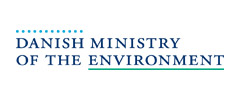*Canada**, Chrysotile and Cancer: Health Canada’s Asbestos International Expert Panel Report*
A report written by Lesley Thomas Stayner, PhD for the Journal of Occupational and Environmental Medicine, December 2008, Volume 50, number 12
22.12.2008 |Journal of Occupational and Environmental Medicine
I agreed to participate as a member of this panel based on assurances that Health Canada was seeking a variety of views on this subject, and that our comments including any dissenting opinions from the panels consensus report would be published by Health Canada. We were also given the opportunity to provide individual responses to questions raised by Health Canada, which were also supposed to be made public. The report from this meeting and our individual comments that were completed in March 2008 have unfortunately not been published to date.
The failure to publish the report and our comments has sparked rumors about what they may contain. On May 12, 2008 a speech was made in the Canadian Parliament by Mr. Andre Bellavance, a representative from Quebec urging delay in consideration of proposal by the New Democratic Party to ban the use and export of chrysotile asbestos in Canada. In his speech, Mr. Bellavance criticized the New Democratic Party for not considering the recent findings on the “safe use of chrysotile” including the report from the expert panel convened by Health Canada. On May 23, 2008, I sent a letter to the Honorable Tony Clement who was the Canadian Minister of Health (A copy of the letter will be provided upon request). In my letter, I strongly urged the Minister to expedite the release of the report and our individual comments since findings from our report were being misrepresented and misused for political purposes. On May 24th, Dr Trevor Ogden, the chair of our expert panel, sent a letter to the Minister of Health in which he supported my concerns about the delay in the release of the report and also urged the Minister to “to see that the reports are made public forthwith.”
Our letters received considerable attention in the Canadian press and I was hopeful at the time that this would lead to a prompt release of the report and our individual comments. As recently noted in an editorial in the Annals of Occupational Hygiene by Dr Trevor Ogden it now appears to be unlikely that the report will be released soon.1
The Canadian government has closed Parliament and called for new elections. A decision on releasing the report can not be made until new elections are held on October 14^th and a new government is formed. It also seems likely that the former Canadian government did not want to release the report before the upcoming Rotterdam Convention which will be held in Rome at the end of October. The Rotterdam Convention on Prior Informed Consent Procedure for Certain Hazardous Chemicals and Pesticides in International Trade is a treaty under the United Nations which has developed a list of substances, currently 39, which cannot be traded without the prior informed consent of the importing country.2 Signatory countries can nominate chemicals to be added to the list, but in the end the decision is made by a conference of signatories. The listing of chrysotile asbestos was prevented by Canada and a few other countries in 1998, 2003, 2004, and 2006. In 2006, 100 countries supported listing of chrysotile and six were against. Canada is expected by critics to try and block the listing again at the upcoming conference which will be held during the last week of October in Rome.
So what does the report say about chrysotile asbestos? Unfortunately I and other members of the panel signed a contract that prevents us from releasing the contents of the report. However, I think what is more important is what the report does not say, which is that exposure to chrysotile asbestos is safe. Chrysotile asbestos, as well as other forms of asbestos, has been recognized by the numerous scientific organizations to be a cause of lung cancer, mesothelioma and asbestosis.3– 6 There is no new scientific information available or presented in our report that would alter this fundamental conclusion. Thus the report does not provide support for the argument that chrysotile asbestos should not be listed as a hazard by the Rotterdam Convention or that production and use should not be banned by Canada or other countries.
What was primarily discussed at the meeting, and what is the subject of legitimate debate, is whether chrysotile asbestos is as potent as other forms of asbestos in inducing malignant respiratory diseases. There were, as might be expected, a range of views on this topic expressed at our meeting in Montreal. It is critically important for the public and policy makers to understand that even if it is true that chrysotile is less potent than other forms of asbestos that this does not imply that exposures to chrysotile are safe.
There appears to be a general consensus in the scientific community based on epidemiologic evidence that chrysotile asbestos is less potent than amphibole forms of asbestos with regard to the induction of mesothelioma. Berman and Crump in a recently published metanalysis reported strong statistical evidence that the chrysotile is less potent than amphiboles for mesothelioma.7 However, the magnitude of this difference is highly uncertain because of the uncertainties underlying the estimation of exposures in these studies.
The evidence for a difference in the potency of different types of asbestos in inducting lung cancer risk is weak at best. There is no evidence for a difference in potency for lung cancer in toxicologic studies of rodents exposed to different forms of asbestos by inhalation.8 The evidence for a difference in lung cancer potency by fiber type was found to be “less clear” for lung cancer than for mesothelioma in the recent metanalysis by Berman and Crump.7 A statistically significant difference was observed in some but not all of their models, and more importantly there remains a large and yet unresolved discrepancy in the findings for lung cancer in the studies of Quebec miners and millers of chrysotile, 9 and those from a study of South Carolina textile workers who primarily were exposed to chrysotile asbestos fibers from Quebec.10,11 The slope for lung cancer from the South Carolina study is among the highest of the studies of any form of asbestos, and is approximately 100 times greater than the slope from the Quebec study. In the Berman and Crump7 metanalysis exclusion of the Quebec study resulted in a 2-fold decrease and exclusion of the South Carolina study results in a 2-fold increase in the slope for chrysotile exposure and lung cancer risk. In other words, the findings from this metanalysis were highly dependent on whether one believes the results from the South Carolina study or the Quebec study is valid. Until an explanation is found for the discrepancy in findings between these two studies efforts at developing an overall estimate of risk for lung cancer among chrysotile exposed workers is a dubious exercise.
The irony of this whole affair is that by suppressing publication of this report the Canadian government has raised speculation in the press that the report must contain information that is not consistent with their public position that chrysotile can be used safely and against any restrictions in trade. This is clearly a case of how governmental secrecy in scientific issues related to public health can badly backfire. What should be truly embarrassing to the Canadian government and people is their position that exposure to chrysotile asbestos is safe and that there is no need to warn the developing countries that it exports to about the hazards associated with its use. There is simply no scientific evidence to support this position. Canadians have an historic opportunity to not only support the listing of chrysotile in Rotterdam, but also even more importantly by banning the export and use of asbestos in Canada. In doing so, Canada would send a strong signal of support to other countries, including the United States, who are currently considering legislation to ban asbestos. The banning of asbestos is the only means for preventing a tragic repeat of the epidemic of asbestos related diseases that is still occurring in the US and Europe in the developing countries that are currently importing and using chrysotile asbestos from Canada and other countries.
Leslie Thomas Stayner, PhD, Division of Epidemiology and Biostatistics
UIC School of Public Health, Chicago, Ill
References:
1. Ogden T. Canada, chrysotile, and the search for truth. Ann Occup Hyg. 2008 Sep 23. [Epub ahead of print].
2. United Nations Environment Programme. Rotterdam Convention: Overview. 2008. Available at: http://www.pic.int/home.
3. International Programme on Chemical Safety (IPCS). Chrysotile. Geneva: World Health Organization; 1998.
4. International Agency for Research on Cancer (IARC). Asbestos. Vol. 14. Lyon, France: IARC; 1977.
5. National Toxicology Program (NTP). First Annual Report on Carcinogens. NC: NTP; 1980.
6. National Institute for Occupational Safety and Health (NIOSH). Criteria for a Recommended Standard: Occupational Exposure to Asbestos. US Dept of Health, Education and Welfare (NIOSH, HSM72–10267); 1972.
7. Berman W, Crump K. A metanalysis of asbestos that addresses fiber size and mineral type. Crit Rev Toxicol. 2008;38:49–73.
8. Berman DW, Crump KS, Chatfield EJ, Davis JMG, Jones AD. The sizes, shapes, and mineralogy of asbestos structures that induce lung tumors or mesothelioma in AF/HAN rats following inhalation. Risk Anal. 1995;15:181–195.
9. Liddell FDK, McDonald AD, McDonald JC. The 1891–1920 birth cohort of Quebec chrysotile miners and millers: development from 1904 and mortality to 1992. Ann Occup Hyg. 1997;41:13–36.
10. Hein MJ, Stayner LT, Lehman E, Dement JM. Follow-up study of chrysotile textile workers: cohort mortality and exposure response. Occup Environ Med. 2007;64: 616–625.
11. Stayner LT, Kuempel E, Gilbert S, Hein M, Dement J. An epidemiologic study of the role of chrysotile asbestos fiber dimensions in determining respiratory disease risk in exposed workers. Occup Environ Med. 2007 Dec 20; [Epub ahead of print].
Related News
Meet the Winners of the Gender Just Climate Solutions Award at COP24
On the 70th anniversary of the Universal Declaration of Human Rights, we awarded Gender Just Climate Solutions Winners at the climate negotiations in Katowice, Poland
11.12.2018
Invitation: Gender Just Climate Solutions Award 2018
10 December, COP24 Katowice
04.12.2018
Getting to the Future We Want
4-7 November, Brussels: European Environmental Bureau’s (EEB) Annual Conference
12.11.2018
GoodFood4All
WECF and partners all over Europe start GoodFood4All Campaign
06.11.2018
#Ruralwomen: join our Women2030 campaign!
15.10.2018





































